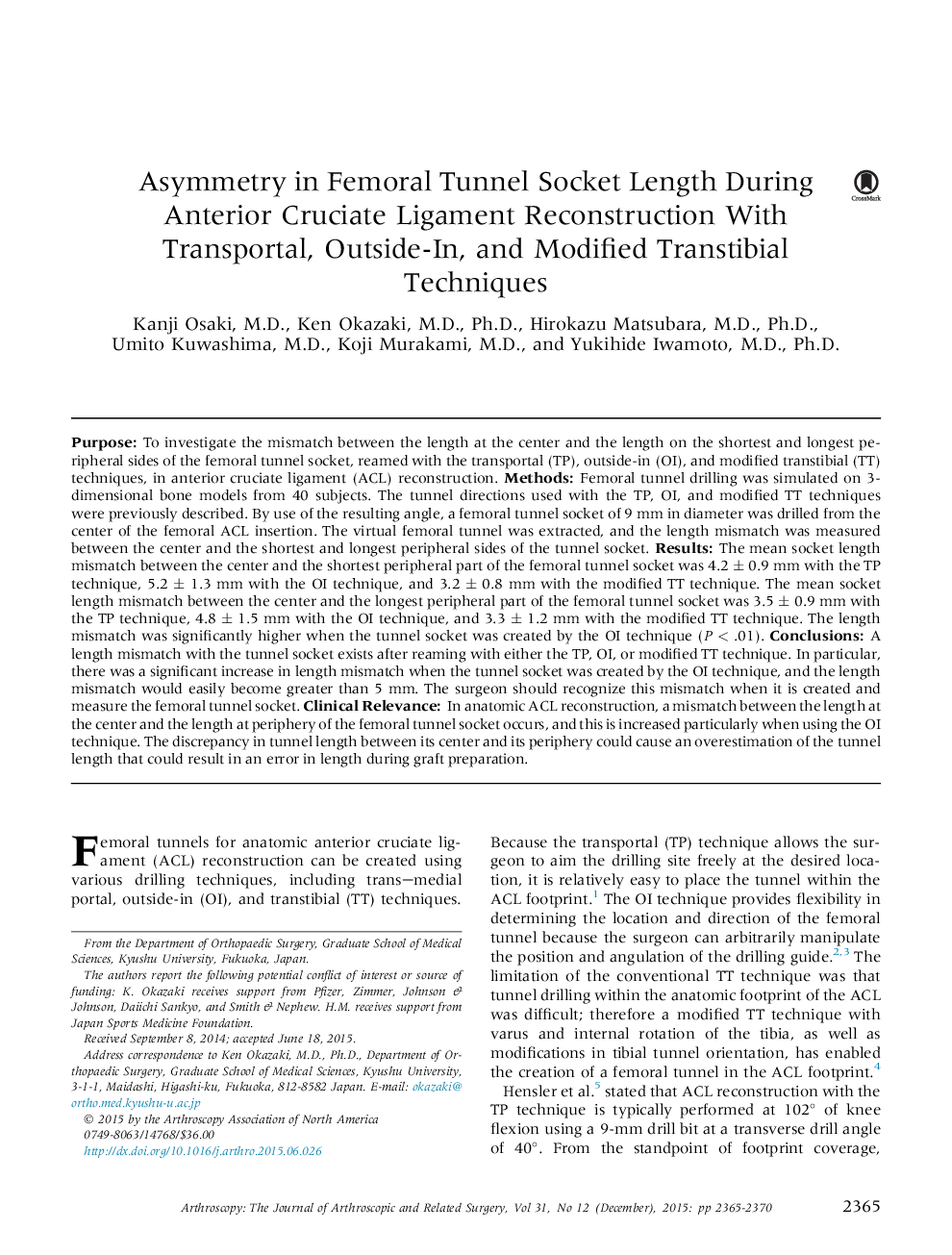| Article ID | Journal | Published Year | Pages | File Type |
|---|---|---|---|---|
| 4042428 | Arthroscopy: The Journal of Arthroscopic & Related Surgery | 2015 | 6 Pages |
PurposeTo investigate the mismatch between the length at the center and the length on the shortest and longest peripheral sides of the femoral tunnel socket, reamed with the transportal (TP), outside-in (OI), and modified transtibial (TT) techniques, in anterior cruciate ligament (ACL) reconstruction.MethodsFemoral tunnel drilling was simulated on 3-dimensional bone models from 40 subjects. The tunnel directions used with the TP, OI, and modified TT techniques were previously described. By use of the resulting angle, a femoral tunnel socket of 9 mm in diameter was drilled from the center of the femoral ACL insertion. The virtual femoral tunnel was extracted, and the length mismatch was measured between the center and the shortest and longest peripheral sides of the tunnel socket.ResultsThe mean socket length mismatch between the center and the shortest peripheral part of the femoral tunnel socket was 4.2 ± 0.9 mm with the TP technique, 5.2 ± 1.3 mm with the OI technique, and 3.2 ± 0.8 mm with the modified TT technique. The mean socket length mismatch between the center and the longest peripheral part of the femoral tunnel socket was 3.5 ± 0.9 mm with the TP technique, 4.8 ± 1.5 mm with the OI technique, and 3.3 ± 1.2 mm with the modified TT technique. The length mismatch was significantly higher when the tunnel socket was created by the OI technique (P < .01).ConclusionsA length mismatch with the tunnel socket exists after reaming with either the TP, OI, or modified TT technique. In particular, there was a significant increase in length mismatch when the tunnel socket was created by the OI technique, and the length mismatch would easily become greater than 5 mm. The surgeon should recognize this mismatch when it is created and measure the femoral tunnel socket.Clinical RelevanceIn anatomic ACL reconstruction, a mismatch between the length at the center and the length at periphery of the femoral tunnel socket occurs, and this is increased particularly when using the OI technique. The discrepancy in tunnel length between its center and its periphery could cause an overestimation of the tunnel length that could result in an error in length during graft preparation.
